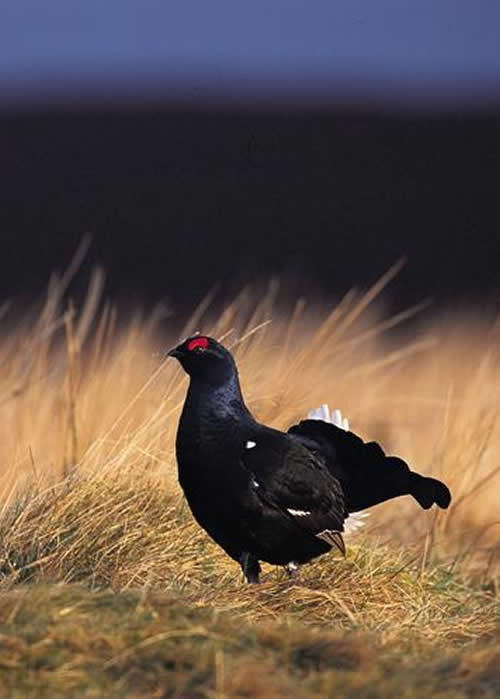
Conservationists have released nine black grouse into the wild in a bid to reintroduce the birds to Arran.
A total of 14 pairs were brought to the island in February. The female birds will be released after the males have had time to establish territories.
The last sighting of a black grouse on the island was said to be in 2000.
The scheme is being run by the Arran Black Grouse Group, the National Trust for Scotland, Arran Natural History Society and Scottish Natural Heritage.
The birds have been electronically tagged so that their movements can be tracked during their first breeding season on the island.
Kate Sampson, senior ranger for National Trust for Scotland, said: "We want the birds to get the best possible start in their new life on Arran, so we are taking all the steps we can to keep their stress levels to a minimum when they are released. It is important that they can be freed with as little fuss as possible.
"I know that we will all be keeping a close eye on the tracking devices to see how the birds are doing in their first few weeks and months, and will have our fingers crossed for a successful breeding season."
Falling population
Historically, the black grouse received special protection on Arran.
In 1703, the book Description of the Western Islands of Scotland described how they were not allowed to be killed without a permit, under punishment of a fine.
Large numbers were being shot in the 19th Century but by the 1950s the black grouse was still a common breeding species right across Arran.
However, numbers continued to fall, and the National Trust for Scotland said the last recorded bird was a single female spotted in High Glen Cloy on 18 February, 2000.
In Britain, surveys carried out by the Royal Society for the Protection of Birds, the Game Conservancy Trust and Forest Enterprise, showed that the UK black grouse population fell from about 25,000 males in the early 1990s to an estimated 6,510 males in 1995/6.
It is thought the main reasons for decline include loss of habitat through intensive sheep grazing, agricultural improvements and changes in agriculture.
Increased numbers of predators such as foxes have also been blamed.
The Arran Black Grouse Group is made up of conservationists, estate managers, farmers, foresters and gamekeepers
